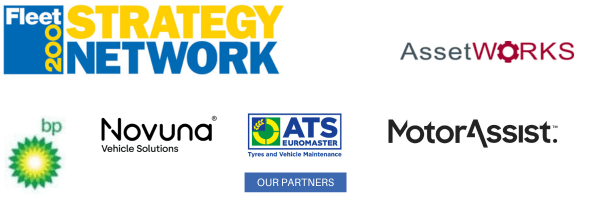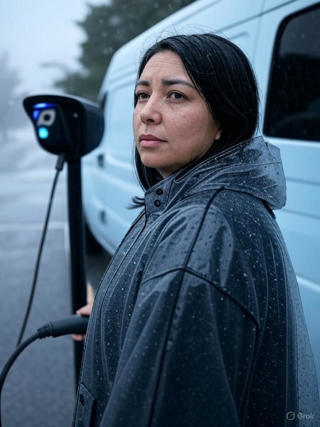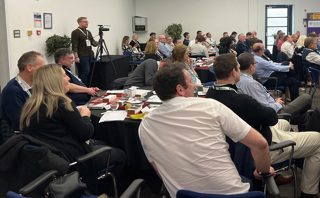Addressing root courses of driver distraction, from working hours to pay, are critical to maximising fleet safety.
Modifying driver behavior can be achieved using technology to monitor and improve it; methods to enhance safety inlclude telematics, confidential support and messaging.
Understanding differences in fleets’ operations is as important as appreciating the shared experiences, and leading from the top is critical.
Fleet decision-makers also stressed the importance of addressing workplace culture and stress, and the impact of uninsured driving.
These points were aired by fleet decision-makers - and a Brake representative - at the May 2024 meeting of the Fleet200 Strategy Network.
Action points:
Key points made in the discussion
Addressing root courses of driver distraction, from working hours to pay, are critical to maximising fleet safety.
Modifying driver behavior can be achieved using technology to monitor and improve it; methods to enhance safety inlclude telematics, confidential support and messaging.
Understanding differences in fleets’ operations is as important as appreciating the shared experiences, and leading from the top is critical.
Fleet decision-makers also stressed the importance of addressing workplace culture and stress, and the impact of uninsured driving.
These points were aired by fleet decision-makers - and a Brake representative - at the May 2024 meeting of the Fleet200 Strategy Network.
Action points:
- Consider using telematics technology in more vehicles to monitor behavior and instantly penalize driver that have been distracted
- Build a league table to reward safe driving behavior based on speeding alerts and accidents
- Provide case studies on prosecutions to senior leadership to emphasize responsibilities
- Offer speaker opportunities from organizations like Brake to emphasize human impact of crashes
- Explore using short impactful videos rather than just statistics to engage senior leaders
Key points made in the discussion
The importance of monitoring driver behaviour
Some organisations don’t pay high salaries or hourly rates, which means employees aren’t particularly loyal or engaged in what the company says to them. They leave the minute you try and engage them in anything that directly impacts the job
The impact of driver distractions – most notably mobile phones – is consistently underestimated by businesses. Consider the possibility of low paid drivers having another job which they might be using their phone to co-ordinate while driving.
Real-time monitoring of driver behaviour through telematics systems is essential, with the use of GPS tracking to ensure adherence to routes and schedules.
Use of black box data recorders by insurance companies can support safety strategies, for example registering when a driver uses their phone, change a song on the stereo giving a point score of risky behaviour. But reward those whose behaviour contributes to insurance cost reduction
Punitive measure against drivers showing poor behaviour can reduce honesty levels as drivers become reluctant to share incident details
Monitor speed, acceleration, braking patterns, and idling time to promote safe driving practices.
Training and education
Continuous driver education programs are important. Focus on defensive driving techniques
Consider regular training sessions to update drivers on new safety protocols and regulations and use simulation-based training to replicate challenging driving conditions.
Demonstrate the human impact of distracted driving. Brake works with people who have been affected by a death or serious injury. Instead of the message being about the driver and organisation, turn it towards ensuring everyone gets home to their families safely
Incentivisation
Implement of reward systems to encourage positive driving behaviour, or programmes that recognise drivers with exemplary safety records and fuel-efficient driving. Don’t just target those that break the rules.
Use of gamification can foster a competitive spirit and improve overall driving standards, for example ‘top of the league’ tables for positive outcomes
Technology integration
Adopt advanced driver-assistance systems (ADAS) to aid drivers and reduce human error.
Dashcams and other monitoring devices can provide insights and facilitate training
We designate mobile phones to certain drivers who are not allowed to share their numbers, so they can’t be called by friends or family. They’re used by the business when a vehicle isn’t visible on a tracker, or a delivery’s late
Integrate mobile apps into the business to support driver incident reporting and for administrative staff to get real-time data
Install driver / cab-facing cameras. If a driver is recorded being distracted they are given points on their licence. People don’t care because they can get away with things.
Video: hear why fleet decision-makers value the Fleet200 Strategy Network (find out more and apply to join below)
Login to continue reading.
This article is premium content. To view, please register for free or sign in to read it.





















Login to comment
Comments
No comments have been made yet.